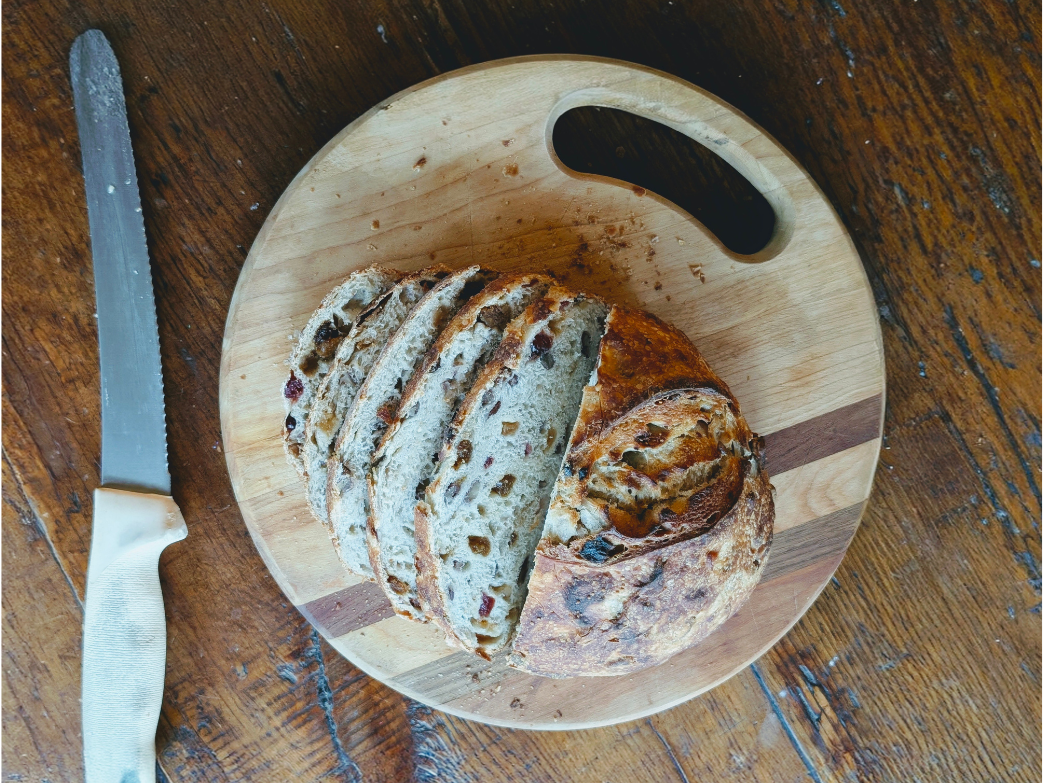By Lucy Yanckello, Ph.D.
Wildgrain, opens in a new tab is the first bake-from-frozen subscription box for sourdough breads, fresh pastas, and artisanal pastries.
There are many types of flours on the market, with the most prevalent in the United States being flour ground from wheat. Today, supermarkets stock many flour options, with each flour exhibiting a different nutrition profile, so how do you decide what is the best flour for you?
Healthy flour: what makes a flour unhealthy or healthy?
Eating foods that contain flour contributes to your daily intake of grains. The USDA suggests that at least half of your daily intake of grains be whole grains. Grains are divided into two subgroups: refined grains and whole grains.
Refined grains undergo a process called “milling” that removes the bran and germ which improves shelf life and gives a finer texture. However, this also removes essential nutrients from the flour such as B-vitamins and fiber. Examples of refined grains are wheat (white) flour, enriched wheat flour, and all purpose flour.
Whole grains do not undergo the milling process but instead contain the entire grain kernel. This preserves essential nutrients such as B-vitamins, iron, selenium and magnesium. Examples of whole grains include whole wheat flour.
What is the difference between wheat flour vs enriched wheat flour vs whole wheat flour vs all-purpose flour?
It may be confusing to keep straight the different types of flours on the market. Here is a breakdown in the differences between the flours discussed in this article.
Wheat flour: Wheat flour encompasses a broad category of flours on the market, because it is the most common grain ground into flour. Wheat flour can be whole grain or refined and can be turned white by using a bleaching agent. The following three flours fall under the wheat flour category and differ based on how they are milled and what they are used for in cooking and baking.
Enriched wheat flour: By law, refined wheat flours are enriched with B-vitamins and iron and fortified with folic acid. There are many types of enriched wheat flour.
All-purpose flour: All-purpose flour is a type of refined enriched wheat flour used for a myriad of things including baking, as a thickening agent, or breading.
Whole wheat flour: Whole wheat flour is a whole grain that provides more fiber and other nutrients naturally than refined enriched flours. It can be used in place of all-purpose flour in baking and cooking. Whole wheat flour has a shorter shelf-life than refined flours.
What is the healthiest flour for you: all-purpose flour vs wheat flour vs whole wheat flour vs enriched whole wheat flour?
Not all flours are created equal in terms of health benefits. Whole grains, present in whole wheat flour, have shown to have many health benefits. Whole grains contain beneficial nutrients including:
- Dietary fiber in whole grains: Fiber may help reduce blood cholesterol levels and lower risk of heart disease. Fiber is also important for proper bowel function.
- Magnesium and selenium in whole grains: Magnesium is a mineral used in building bones and releasing energy from muscles and selenium is important for a healthy immune system.
- B-Vitamins in whole grains: Vitamin B1 (thiamine), B2 (riboflavin) and B3 (niacin) play a key role in energy metabolism, and are also essential for a healthy nervous system.
- Iron in whole grains: Iron is used to carry oxygen in the blood. Whole grain products are major sources of iron in American diets.
- Folic acid in whole grains: Folic acid is part of an overall healthy diet before and during pregnancy. During pregnancy, folic acid helps properly form the neural tube which forms the early brain and spine.
Importantly, refined grains that are enriched, such as enriched wheat flour and all purpose flour, have B-vitamins and iron added back in after processing and are fortified with folic acid. However, fiber is not added back into enriched grains. Try and opt for enriched refined flours if whole grain flours are not available.
Is whole wheat flour better for your health?
Yes, whole wheat flour is better for your health, as whole grain food consumption has been shown to decrease the risk of cardiovascular disease, type-2 diabetes, metabolic syndrome, and cancer. The mechanisms that underlie these effects may be attributed at least in part to the high fiber content of whole grain food, such as whole wheat flour. Fiber is the only component that is stripped from refined grains and not added back in, likely taking away most of the health benefits from refined grains. Whole wheat flour has around 13 grams of fiber per cup whereas refined wheat flour has around 3.4 grams of fiber per cup.
Which wheat flour is best for diabetics? Is enriched wheat flour bad for diabetics? Is wheat flour bad for diabetics?
For those with diabetes, whole grains are more optimal for controlling blood sugars. However, when grains are milled into flour, the carbohydrate content, and ultimately the glycemic index, (GI) increases. High-GI foods lead to rapid blood sugar spikes, whereas low-GI foods absorb more slowly and prevent blood sugar spikes.
According to Harvard Medical School, bread made with 100% whole wheat flour has a GI of 51, whereas bread made with enriched wheat flour has a GI of 71. In order to keep blood sugar regulated after a meal if you have diabetes, opt for foods made with whole wheat flour rather than wheat flour, enriched wheat flour, or all purpose flour.
Keeping a healthy diet: Wheat flours
It is important to balance your intake of refined flours by including whole wheat flour in your diet. As you now know, whole grain foods such as whole wheat flour are associated with better health outcomes. However, refined grain foods such as wheat flour, enriched wheat flour, and all-purpose flour eaten in recommended amounts are not associated with increased health risks, with the exception of those with type-2 diabetes.
After reading this article, hopefully you learned that although we want to be able to put food in binary categories of “unhealthy” and “healthy” or “good” and “bad”, it’s best to eat certain foods in moderation instead of eliminating them all together. Remember, the USDA recommends making half of your grains whole, so keep that in mind when deciding what flour to buy next time you're at the grocery store.
Wildgrain: Try healthy wheat flour breads
Interested in trying new baked goods made with healthy wheat flours? Wildgrain, opens in a new tab is the first bake-from-frozen delivery subscription service for breads, pastries and fresh pastas. Some of our more popular wheat flour breads include Whole Wheat Flour Sourdough, opens in a new tab and Cranberry-Pecan Sourdough Loaf, opens in a new tab. Learn more about Wildgrain and our artisanal baking methods.
About the Author
Lucy Yanckello received her Ph.D. in nutrition from the University of Kentucky College of Medicine. She currently works as a medical writer and enjoys being able to help people better understand nutrition and science.
This content is for informational use only and does not replace professional nutrition and/or medical advice, diagnosis or treatment. It is not a substitute for and should not be relied upon for specific nutrition and/or medical recommendations. Please talk with your doctor about any questions or concerns.



